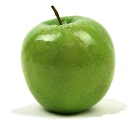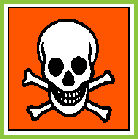



Helping you make healthy choices for you and your family


Below, you will find a list of some of the ingredients commonly found in our toiletries, including baby care products. All have been documented around the world to cause potential harm to human health.
Sodium Lauryl Sulphate (SLS) and
Sodium Laureth Sulphate (SLES)
These are found in shampoos, hair conditioners, toothpastes, body washes etc. They are strong detergents, which can cause irritation and permanent damage to the eyes (especially in children), skin rashes, hair loss, flaking skin and mouth ulceration.
When combined with other ingredients, they can form nitrosamines, which are carcinogenic and can easily pass through the skin into the bloodstream, accumulating in the heart, lungs, liver and brain. See the Material Safety Data Sheet by clicking here
Propylene Glycol (PG)
Material Safety Data Sheets warn users to avoid skin contact with this substance, and protective clothing should be worn at all times. It is the cosmetic form of mineral oil found in automatic brake fluid, hydraulic fluid and industrial antifreeze, yet is also found in make-up, hair and skin care products, deodorants, and aftershave.
The related agent, Polyethylene Glycol (PEG) that is found mainly in skin cleansers is a caustic used in industry to dissolve grease.
Both of these are strong skin irritants and can cause contact dermatitis, liver abnormalities and kidney damage.
It is the most common moisture-carrying vehicle, other than water, in cosmetics. It has better permeation through the skin than glycerin and is less expensive; although it has been linked to more sensitivity reaction.
"…..why a dollop of the wife's moisturiser makes light work of removing paint...….research has revealed that what may look like an innocent tube of white cream could in fact have unforeseen circumstances" Daily Mail, October 14th 1999
Diethanolamine (DEA); Triethanolamine (TEA); Monoethanolamine (MEA)
These chemicals are found in children's bubble baths. When combined with nitrosamines, these substances can become carcinogenic. They are able to pass directly into the blood stream and, in studies, have been found to induce cancer of the liver and kidneys in mice.
Sodium Lauryl Sulphate (SLS) and
Sodium Laureth Sulphate (SLES)
These are found in shampoos, hair conditioners, toothpastes, body washes etc. They are strong detergents, which can cause irritation and permanent damage to the eyes (especially in children), skin rashes, hair loss, flaking skin and mouth ulceration.
When combined with other ingredients, they can form nitrosamines, which are carcinogenic and can easily pass through the skin into the bloodstream, accumulating in the heart, lungs, liver and brain. See the Material Safety Data Sheet by clicking here
Propylene Glycol (PG)
Material Safety Data Sheets warn users to avoid skin contact with this substance, and protective clothing should be worn at all times. It is the cosmetic form of mineral oil found in automatic brake fluid, hydraulic fluid and industrial antifreeze, yet is also found in make-
The related agent, Polyethylene Glycol (PEG) that is found mainly in skin cleansers is a caustic used in industry to dissolve grease.
Both of these are strong skin irritants and can cause contact dermatitis, liver abnormalities and kidney damage.
It is the most common moisture-
"…..why a dollop of the wife's moisturiser makes light work of removing paint...….research has revealed that what may look like an innocent tube of white cream could in fact have unforeseen circumstances" Daily Mail, October 14th 1999
Diethanolamine (DEA); Triethanolamine (TEA); Monoethanolamine (MEA)
These chemicals are found in children's bubble baths. When combined with nitrosamines, these substances can become carcinogenic. They are able to pass directly into the blood stream and, in studies, have been found to induce cancer of the liver and kidneys in mice.
Although outlawed in some countries, DEA, TEA and MEA are still widely available in the UK and Ireland. See the Material Safety Data Sheet by clicking here.
Talc
This is found in baby powders, face powders, and body powders as well as some contraceptives such as condoms. Talc is a known carcinogen and is a major cause of ovarian cancer when used in the genital area. It can be harmful if inhaled as it can lodge in the lungs, causing respiratory disorders.
Isopropyl
This is a poisonous solvent and denaturant (alters the structure of other chemicals) and can be found in hand lotions, body rubs, hair colour rinses, fragrances and aftershave lotions. Isopropyl dries hair and skin, creates cracks and fissures in the skin, which encourages bacterial growth and can cause headaches, flushing, nausea, vomiting and depression.
Imidazolidinyl urea and DMDM hydantoin
These formaldehyde-
Alcohol
This is a colourless, volatile, flammable liquid that is frequently used in beverages and medicine. When it is used in ingestible products it may cause the body to be more vulnerable to carcinogens.
Mouthwashes that have an alcohol content of 25% or more have been implicated in
mouth, tongue and throat cancers.
"Most popular mouthwash brands have a higher alcohol content than beer or wine and that can be dangerous, even deadly to small children that accidentally swallow mouthwash", according to the Non-
Sodium Fluoride
This is found in toothpaste. It can cause permanent discolouration of second teeth, called Fluorosis, especially when ingested as a baby. It is also an active component of rat poison. In the US, it is a legal requirement to display the following warning in bold faced capitals on the boxes of all toothpastes containing Fluoride:
"WARNING: KEEP OUT OF THE REACH OF CHILDREN UNDER SIX YEARS OF AGE. IN CASE OF ACCIDENTAL OVERDOSE, SEEK PROFESSIONAL ASSISTANCE OR CONTACT A POISON CONTROL CENTER IMMEDIATELY."
Petrolatum & Mineral Oil
This is used industrially as a petroleum based grease component and is also known as liquid vaseline, mineral oil jelly, baby oil and paraffinum liquidum. This substance strips the natural oils from the skin and forms an oily film over the skin, which prohibits the release of toxins. It can also cause photosensitivity, chapping, dryness and premature ageing.
"Mineral Oil has a tendency to dissolve the skin's own natural oil and thereby increase dehydration. Mineral Oils have been found to be probably the single greatest cause of breakouts in women who use a new product." Deborah Chase, The New Medically-
Lanolin
This is found in Cosmetics and Body Lotions and also in nappy cream. Lanolin is a known skin sensitiser that can cause rashes. In tests, 50 – 60% of lanolin samples were found to be highly contaminated with organo-
Triclosan
This is an anti-
Other Potentially Harmful Ingredients To Look Out For:
Alpha Hydroxy Acid (AHA) -
Aluminium -
Animal Fat (Tallow) -
Collagen -
Elastin of High Molecular Weight -
Fluorocarbons -
Glycerin -
Lye -
Now take a look at the list of ingredients on your containers of shampoo, bubble bath, shower gel, toothpaste etc. Are any of the above mentioned on the labels? Frightening isn't it? However, you are now able to make an informed choice on whether or not to:
a) Ignore all you have just read and "hope” that you and your family will not be harmed
b) Become a wise consumer by avoiding known, harmful ingredients and seek out companies who consciously make an effort to manufacture safe alternatives.
a) Ignore all you have just read and "hope” that you and your family will not be harmed
b) Become a wise consumer by avoiding known, harmful ingredients and seek out companies who consciously make an effort to manufacture safe alternatives.
In 2003, a study by the World Wide Fund for Nature found as many as 70 different chemicals in the blood of UK citizens. The average number was 27 with one man having 49. Babies had as many as 20 toxins, possibly because they were passed via the placenta and through breast milk after birth.
The manufacturers are well aware of the potential harm of these chemicals because their employees, by law, have to wear safety goggles and protective clothing to prevent skin contact.
So why do they use these chemicals when there is so much evidence documenting their harm? One reason is that they are cheap. Also, manufacturers are currently not required to prove the safety of ingredients used in cosmetics and toiletries.
The manufacturers are well aware of the potential harm of these chemicals because their employees, by law, have to wear safety goggles and protective clothing to prevent skin contact.
So why do they use these chemicals when there is so much evidence documenting their harm? One reason is that they are cheap. Also, manufacturers are currently not required to prove the safety of ingredients used in cosmetics and toiletries.
Controversial Ingredients
In 1989, a study by the National Institute of Occupational Safety and Health (NIOSH) in the US showed that of 2,983 chemicals used in personal and household products 884 were known to be toxic. Of these:
|
|
778 were acutely toxic
|
|
|
146 were carcinogenic
|
|
|
218 were believed to cause reproductive complications
|
|
|
314 were believed to cause biological mutations
|
|
|
376 were known to cause eye and skin irritation
|
Most people assume that the products that they use daily for personal hygiene and skin care are safe, in the belief that the government would not allow them if there was any controversy over their safety.
The reality is that up to now, the government has had little say on this matter. However, steps are now being taken in Europe to review a list of questionable chemicals and some have already been banned by the EU.
If you wish to read more detailed information about the most common chemicals used in everyday products, click on the following links:
Sodium Lauryl Sulphate and Sodium Laureth Sulphate
Propylene Glycol
Diethanolamine, Monoethanolomione and Triethanolomine
Fluoride
Sodium Lauryl Sulphate and Sodium Laureth Sulphate
Propylene Glycol
Diethanolamine, Monoethanolomione and Triethanolomine
Fluoride

Click to view videos on Controversial Ingredients
| Your Health Your Future |
| Controversial Ingredients |
| Nutritional State |
| Parent and Child |
| Microwave Ovens |
| Recommended Books |
| Skin Absorption |
| Sodium Lauryl Sulphate |
| Propylene Glycol |
| DEA, MEA, TEA |
| Chemical Calculator |
| Fluoride |
| Aspartame |
| Fluoridation |
| Water Filtration |
| Planning a Pregnancy |
| Pregnancy Care |
| Post Pregnancy Care |
| Amazon Books |
| EBooks |
| About Us |
| Health Services |
